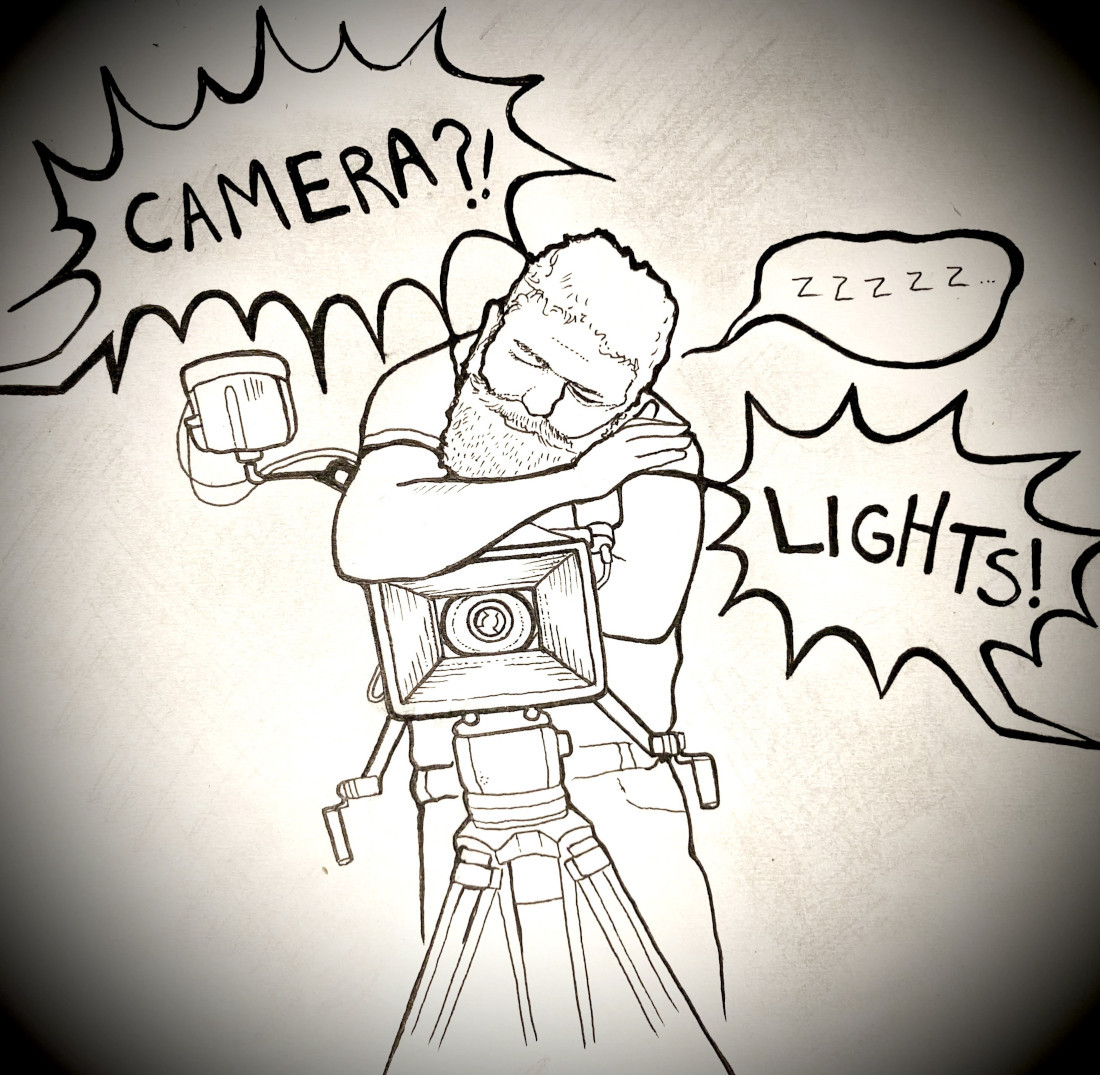‘There is no work-life balance’
Labour issues in the local film industry brought to the fore

Illustration by Gabrielle Funk
Following a strike-averting agreement, the labour unrest among International Alliance of Theatrical Stage Employees (IATSE) members in the United States seemed to have toned down. However, concerns were raised again following the on-set shooting death of cinematographer Halyna Hutchins while working on the film Rust.
Hours before a firearm accidentally discharged and killed Hutchins, multiple IATSE crew members walked off set in protest of unsafe working conditions, including multiple prior accidental gun discharges.
Many of the issues that sparked the initial strike vote – including health and safety concerns and a lack of rest periods – have been cited by local film industry workers The Uniter spoke to. Chelliot Osuntade has worked on a number of film sets in Winnipeg as an extra and a cast member. Having lived through both experiences has revealed the disparities in how people on set are treated depending on where they fall in the hierarchy.
“There clearly is a priority list, and (background actors) are usually super low on that list,” Osuntade says.
For many film workers, workdays that extend into double digits are the norm. That was the experience of another film worker, to whom The Uniter has granted anonymity due to potential employment implications. Having worked on everything from indie shorts to large-scale productions, they say they’ve often worked 16- to 19-hour days.
“There is no work-life balance. When you’re on a movie (set), there is zero opportunity for you to have a life outside of that,” they say.
According to the film worker, the crux of why folks on set are forced to work gruelingly long hours is due to a demand for productivity and profit over their livelihoods. At times, they say this comes at the cost of workers’ health and safety.
“There’s zero regard for humans as working beings in the local film industry,” they say. “They’re looking dollars to cents in how long that camera is running.”
The 2021 IATSE 856 Collective Agreement, which applies to all local production workers within the union, includes many stipulations about working hours, meal times and safety. The website includes an IATSE safety hotline that crew can call to report their concerns.
While a contract may help, as someone who has worked union and non-union production contracts, the film worker alleges that, even on union sets, “it often seems as though they’re trying to skirt union rules.”
IATSE Local 856 did not respond to The Uniter’s interview request by time of publication.
To improve conditions on set, Osuntade says more respect must be given to extras.
“Sometimes, it’s like they forget that (background actors) and extras are people as well, and they’re not just pieces that you have to move around for your job,” he says.
Long hours have long passed as a badge of endurance in the film industry. For some workers, any semblance of work-life balance is a pipe dream.
The question at hand for IATSE workers who were prepared to strike in the US and fed-up local industry professionals remains the same: though conditions are this way, must they stay this way?
“I think improving conditions stems from being in solidarity,” the film worker says. “We’re not going to get any change in the working conditions without pressure from below.”
Published in Volume 76, Number 07 of The Uniter (October 28, 2021)







